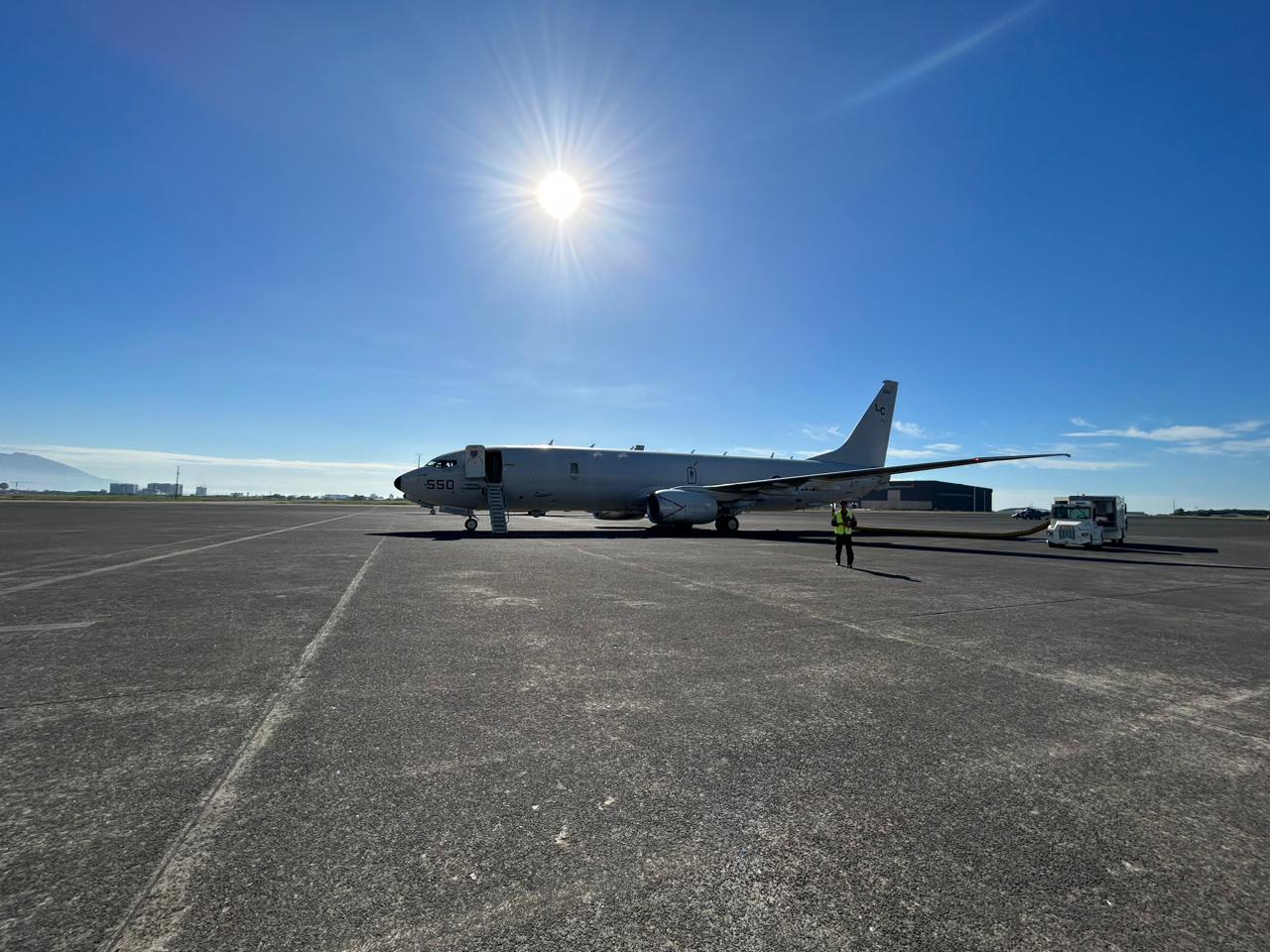
The Boeing’s P8-A Poseidon before take off in Mabalacat, Pampanga. INQUIRER.net / John Eric Mendoza
ABOARD Boeing’s P8-A Poseidon — An American surveillance aircraft joined the patrols of the United States and the Philippines in the West Philippine Sea on Wednesday, making its presence felt in the region gripped by escalating maritime tensions.
A Chinese aircraft and warship also showed up, as witnessed by Inquirer and a few other Filipino journalists who were invited to observe the reconnaissance aircraft’s first-ever participation in Manila and Washington’s “maritime cooperation activity.”
Cameras, phones and other recording devices were not allowed inside the aircraft.
Only left with pen and paper, journalists observed and jotted down all the details, with most of the crew doing their usual business on their designated workstations, while others explained to reporters the inner workings of their surveillance system.
This aircraft has six workstations, with two personnel each tasked in overseeing the sensors, radars and its antisubmarine system.
Each of the workstations has computer panels which show pertinent information like the total number of vessels and aircraft as indicated by the camera and radar of the aircraft.
All eyes on passing exercise
The aircraft’s crew detected several planes and vessels, but all their eyes were focused on monitoring the conduct of “passing exercise” by the US and Philippine warships off Lubang Island in Mindoro.
Philippine Navy’s corvette BRP Conrado Yap (PS39) and US’ littoral combat ship USS Gabrielle Giffords (LCS10) linked up on Tuesday night west of the said island before the patrols.
The exercise is the highlight of the three-day bilateral activity which began on Tuesday until Thursday.
READ: Bongbong Marcos announces US and Philippines begin joint patrol in WPS on Tuesday
Lieutenant Commander Timothy Cline of the US Navy’s Patrol Squadron 8 said that “all [of the] mission objectives were met” during the flight.
“We got out and conducted our normal routine patrol of the area and met up with forces that were out there conducting the maritime security activity operations,” Cline, who is also the mission commander, told reporters after the aircraft returned to Clark Air Base in Mabalacat, Pampanga.
“We were able to provide eyes in the sky and ensured that they were interacting professionally and safely,” he also said. “Happy to announce it was a mission success.”
Chinese aircraft, warship within eyeshot
However, during its overhead flight, the Poseidon also detected a Chinese aircraft and warship inside the Philippines’ exclusive economic zone (EEZ) of 200 nautical miles as mandated by the United Nations Convention on the Law of the Sea.
The People’s Liberation Army’s (PLA) Navy Jiangkai-II frigate was spotted tailing the bilateral maritime patrols.
No untoward incident occurred, but this PLA warship came as close as around five nautical miles from the USS Giffords, according to the crew.
Also, the crew identified the aircraft as a Shaanxi Y-9 transport aircraft of the PLA.
Cline said the American surveillance aircraft only traversed as far as 105 nautical miles southwest of Lubang Islands, and the Chinese assets were detected not too far from this.
Beijing asserts sovereignty to almost the entire South China Sea, including most of the WPS which encompasses the western section of Manila’s EEZ, but an international tribunal ruling in 2016 effectively dismissed this sweeping claim.
Regardless of this, other states could still enjoy non-economic uses in the EEZ such as freedom of navigation as well as the right of overflight.
Cline said there was “nothing unusual” in the Chinese presence.
“Both parties on both sides conducted themselves safely, professionally and normally,” he said.


